Summary
Foggers aren’t the best choice for flea control (jump to cons). Premise sprays that can be directed at flea habitats are better options.
Precor 2000 Plus
Precor 2000 Plus is comparable to its competitors, but is cheaper (may change).
The best flea fogger is Precor Plus Fogger. It’s comparable to its competitors (Siphotrol Plus and Zodiac Fleatrol). All three foggers contain the same ingredients and concentrations, and they all come with 3 canisters of 3 ounces. Precor is the best option because it’s currently the least expensive.
Comparison
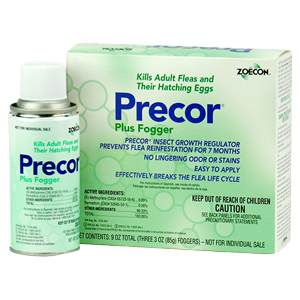 |
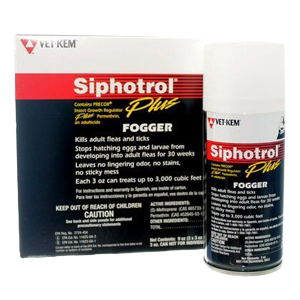 |
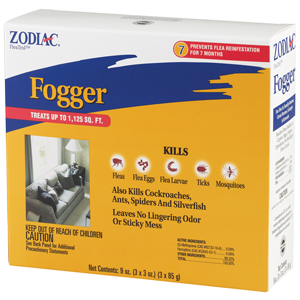 |
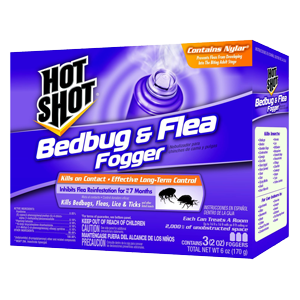 |
|
| Product Name | Zoecon Precor Plus | Vet Kem Siphotrol Plus | Zodiac Fleatrol | HotShot Bedbug & Flea |
| Price | $17 | $17 | $19 | $9 |
| Package | 3 cans | 3 cans | 3 cans | 3 cans |
| Can Size | 3 ounces | 3 ounces | 3 ounces | 2 ounces |
| Total Size | 9 ounces | 9 ounces | 9 ounces | 6 ounces |
| Price / Ounce | $1.90 | $1.90 | $2.10 | $1.50 |
| Can Capacity | 3000 cu ft | 3000 cu ft | 3000 cu ft | 2000 cu ft |
| Total Capacity | 9000 cu ft | 9000 cu ft | 9000 cu ft | 6000 cu ft |
| Application | Aerosol Fogger | Aerosol Fogger | Aerosol Fogger | Aerosol Fogger |
| Use On | Indoors | Indoors | Indoors | Indoors |
| Kills | Eggs Larvae Adults |
Eggs Larvae Adults |
Eggs Larvae Adults |
Eggs Larvae Adults |
| Active Ingredients | Methoprene Permethrin |
Methoprene Permethrin |
Methoprene Permethrin |
Pyriproxyfen Pyrethrins Esfenvalerate Synergists |
| A.I. Concentration | 0.09% 0.58% |
0.09% 0.58% |
0.09% 0.58% |
0.100% 0.050% 0.100% 0.267% |
| Duration | 7 months | 7 months | 7 months | 7 months |
| Product Label | ||||
| MSDS | ||||
| FleaScore | ||||
| Reviews |
- Prices are based on Amazon.com at time of publishing.
- FleaScores are based off of product details (price, size, active ingredients, etc), as well as reviews aggregated from 3rd party sources.
Details
Foggers are over-the-counter insecticide products. They’re used in homes and workplaces to kill a variety of pests, including cockroaches, fleas, ants, silverfish, and flying insects. Foggers are also called bug bombs, total-release foggers (TRF), and total-release aerosols (TRA).
How Foggers Work
Flea foggers are popular because they require little effort or knowledge. The can is placed at the center of a room, often on a table or chair. It’s activated by depressing or removing a tab, which locks the nozzle open. The contents are then released by an aerosol propellant. Insecticide fog is suspended in the air until the droplets gradually settle onto exposed surfaces. This usually takes around 2 hours.
Foggers aren’t a Good Choice
Though convenient, foggers perform poorly at controlling fleas (or other pests). Therefore, they’re seldom recommended. Implementing ineffective flea control wastes money, prolongs the infestation, increases resistance, and unnecessarily releases insecticides into human environments.
Poor Penetration
Foggers are ineffective because there’s minimal penetration into pest harborage sites. When the mist settles, very little insecticide reaches cracks, voids, and other refuges where pests spend most of their time. Even a thin cloth provides protection. Plus, objects in rooms can obstruct, absorb, and prevent distribution of insecticide mist.
Flea larvae develop in protected habitats, often deep within carpets fibers. There, they’ll avoid exposure to a fogger’s mist. Also, the active ingredients tend to act as repellents, causing insects to move deeper into hard-to-reach areas.
Highly Flammable
Aerosol propellants are highly flammable. They’re capable of causing fires and explosions when used or stored near an open flame. Multiple house fires have involved insect foggers when homeowners forgot to extinguish pilot lights, cigarettes, etc.
Insecticide Residues
Bug bombs leave pesticide residues on exposed surfaces and objects. Since mist fills the room, residues can settle onto counter tops, bedding, toys, pet bowls, etc. Product directions specify to cover food, utensils, and related objects, but many homeowners fail to read and follow these instructions. The health hazard related to pesticide residues is debatable and depends on various factors.
Health Concerns
Foggers have been implicated in numerous cases of human pesticide-related injury and illnesses. 80% of cases were low in severity, 18% moderate, and 2% high. Health effects are often temporary respiratory problems. The most common symptoms are headaches, dizziness, weakness, nausea, vomiting, coughing, shortness of breath, leg cramps, and burning eyes. Occupants with asthma and other respiratory ailments may react more severely.
Most incidents of exposure occur when products are misused. Examples include: Not vacating when a fogger is discharged, unintentional discharge, premature re-entry, using an excessive number of foggers, and failure to notify others with access to the premises. In 2011, the EPA required labeling changes to draw attention to clear precautionary information.
Efficacy
Flea foggers and premise sprays contain similar active ingredients, usually pyrethrins and insect growth regulators (IGR). The IGR is the most important component. Foggers with only pyrethrin or pyrethroids won’t provide adequate control against fleas. Those containing an IGR will prevent larval development for 7 months. Though many flea treatments contain IGRs, foggers generally provide the worst results because lower amounts of insecticide reach the carpets. Relevant factors may include inner pressure, liquid/gas ratio, particle size, and discharge rate.
Better Alternatives to Foggers
Directed treatments, such as premise sprays or IGR concentrates, are a better options than foggers for environmental flea control. Sprays can be applied specifically into areas where fleas develop. Examples include carpets and rugs, under beds, behind furniture, and other locations inaccessible to foggers. While sprays require more knowledge of flea habitats, they also provide better coverage, are more effective, and last longer.
Foggers aren’t the best choice for flea control. Visit our page on premise sprays for more effective options.
The Best Flea Fogger
Precor Plus Fogger
Precor Plus Fogger is similar to competitors in active ingredients and size. It’s currently the cheapest option, making it our pick for the best fogger.
Precor Plus is our choice for the best flea fogger. Other foggers listed here contain similar active ingredients and in similar concentrations. As a result, they should all be equally effective. And Amazon reviews show customer satisfaction is about equal. What makes Precor stand out is that it’s currently the cheapest option.
The active ingredients are 0.09% permethrin and 0.58% methoprene. Permethrin is an adulticide that quickly kills any adult fleas in the environment. Methoprene is an IGR that will prevent eggs and larvae from developing for 7 months. Zoecon manufacturers both the fogger and methoprene (the brand name for this compound is Precor). This may explain why they’re able to offer the lowest price.
Precor Plus comes in a package with 3 foggers. Each canister contains 3 ounces, which is capable of treating a room of 3000 cubic feet (a room 15′ x 25′ with 8′ ceilings). So a total of 3 rooms could be treated.
Good Flea Foggers
Siphotrol Plus Fogger
Siphotrol Plus Foggers are nearly identical to Precor Plus. The differences are branding and price. Siphotrol is slightly more expensive.
Siphotrol Plus flea fogger come with 3 canisters in the package. Each can contains 3 ounces, capable of treating 3000 cubic feet. The active ingredients are 0.09% permethrin and 0.58% methoprene. The important aspects are the same as Precor. Siphotrol is lower on our list because it’s slightly more expensive.
Zodiac Fogger
Zodiac Fleatrol foggers are also the same as Precor and Siphotrol. Zodiac foggers are the most expensive of the three.
Zodiac Fleatrol foggers are identical to Precor Plus and Siphotrol Plus foggers. Again, the product contains 3 cans, each containing 3 ounces. The active ingredients and concentrations are the same as the others. The only discernible difference is branding and price. Zodiac foggers are the most expensive of the three.
HotShot Flea Fogger
HotShot foggers are inexpensive, but contain less product than the competition (2 ounces per can). There are also differences in formulation.
HotShot Flea and Bedbug Fogger differ from those previously mentioned. The package comes with 3 foggers, but they are only 2 ounces each. Each canister treats up to 2000 cubic feet (a room 15.5′ x 16′ with an 8′ ceiling). Though these foggers contain less product, the lower price makes up for it.
The active ingredients are 0.1% pyrirproxyfen (Nylar), 0.05% pyrethrins, 0.1% esfenvalerate, and 0.267% synergists. The pyrethrins and esfenvalerate are similar compounds to permethrin. They function as adulticides to kill any adult fleas. The synergist, piperonyl butoxide, isn’t an insecticide but enhances the potency of pyrethrins. Pyriproxyfen is an IGR, similar to methoprene, and will prevent flea eggs and larvae from maturing for 7 months.
Tips for Using Foggers
Place one fogger in every infested room. A single fogger will cover an area specified on the label. Pay attention to label and ensure it suits the size of the room being deployed in. The area must be open and not obstructed by walls. If a home has many small rooms, mini foggers may be the better, less expensive choice.
It’s a good idea to also use flea sprays in conjunction with foggers, especially in severe infestations. The sprays can treat hard-to-reach areas, such as closets and under furniture.
Before activating a fogger, remove furniture cushions to increase exposure of the furniture to the mist.
Disable fire alarms before activating foggers. They can set of the alarm, and someone may enter the home to be exposed to insecticide.

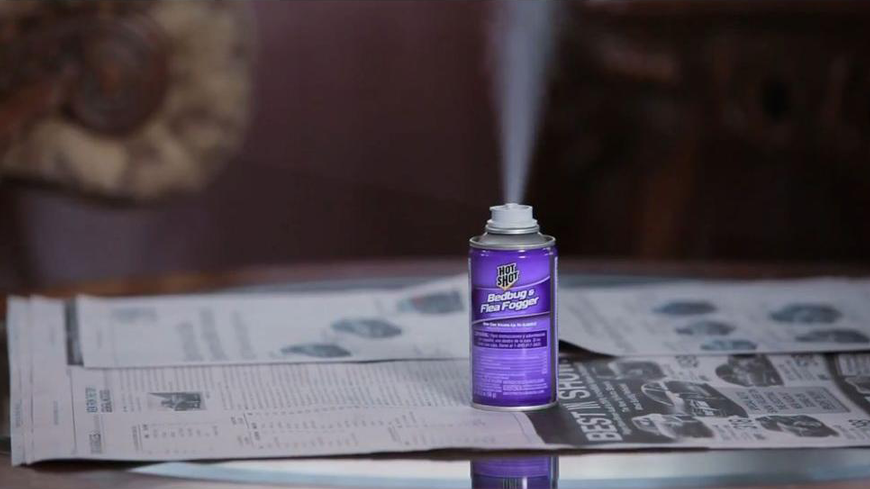

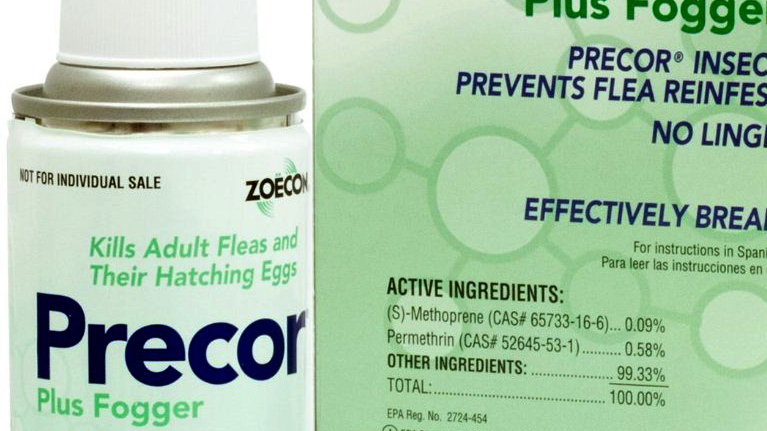
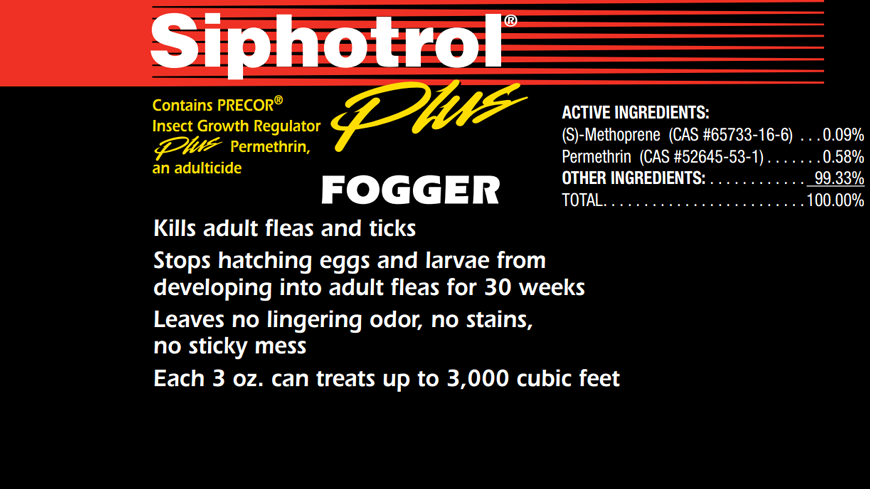
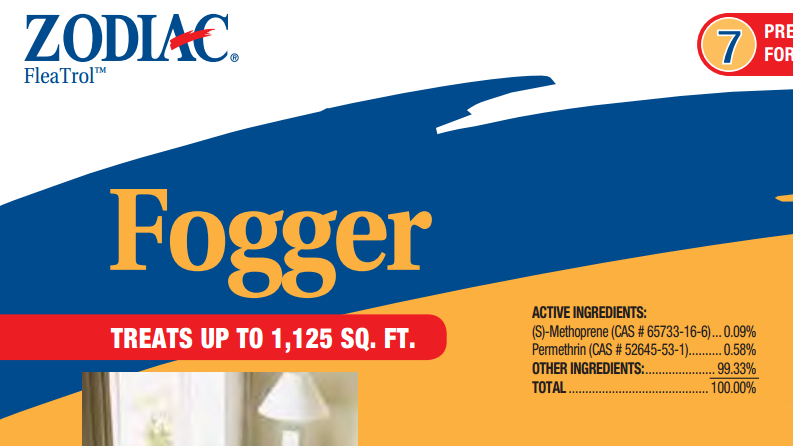
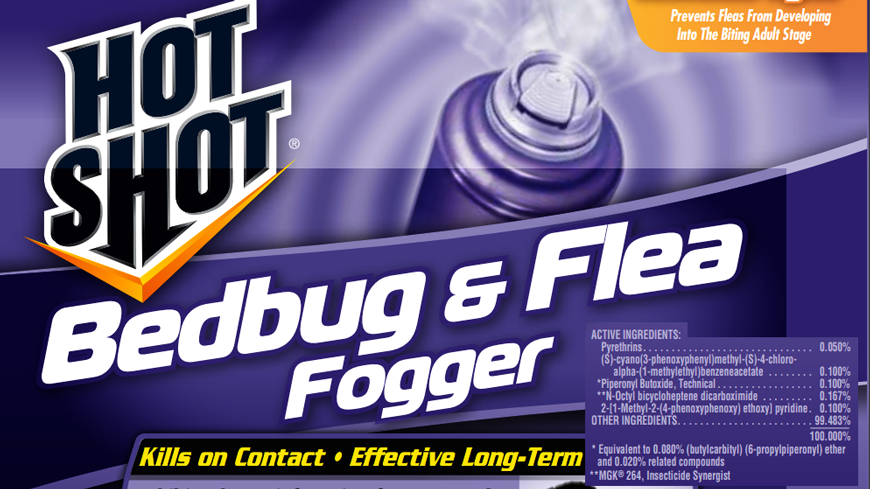


You must log in to post a comment. Log in now.